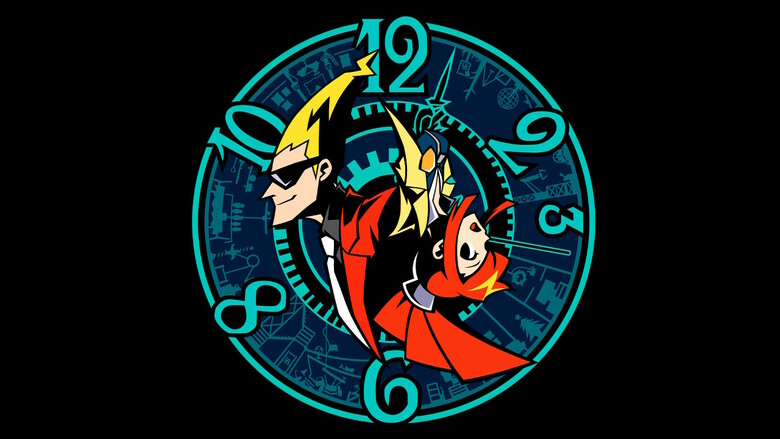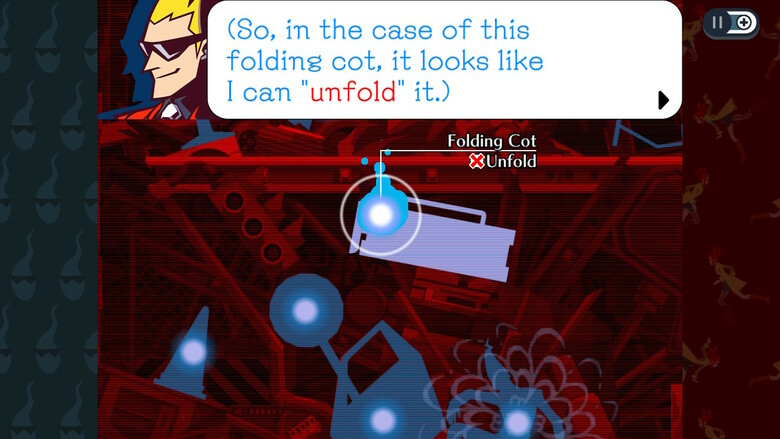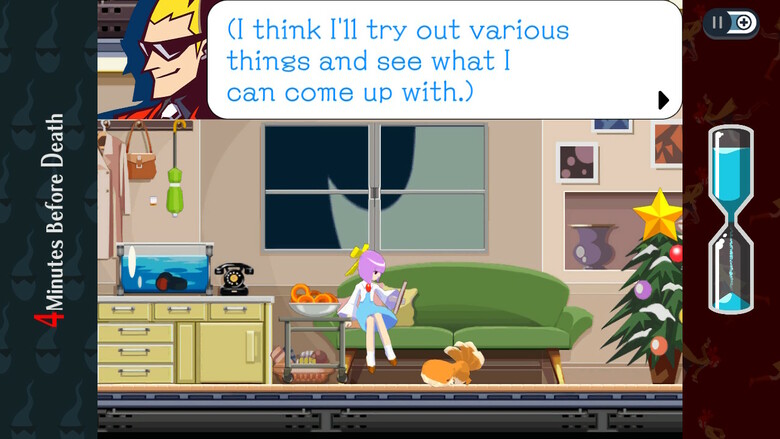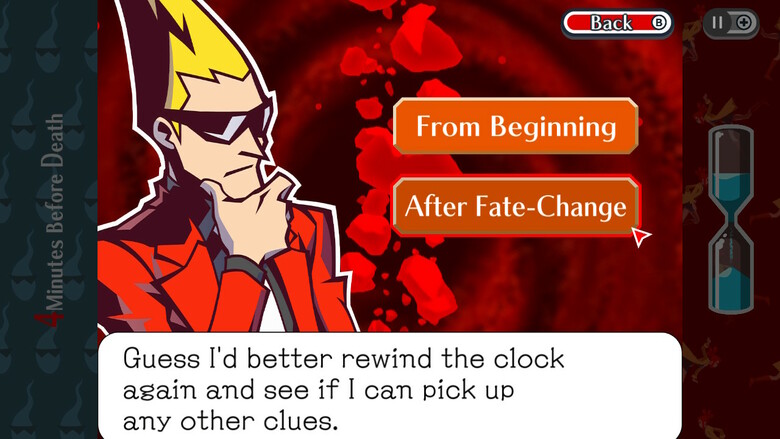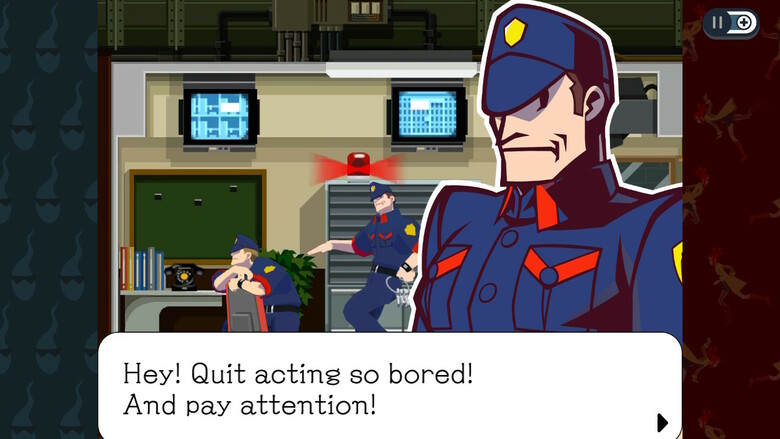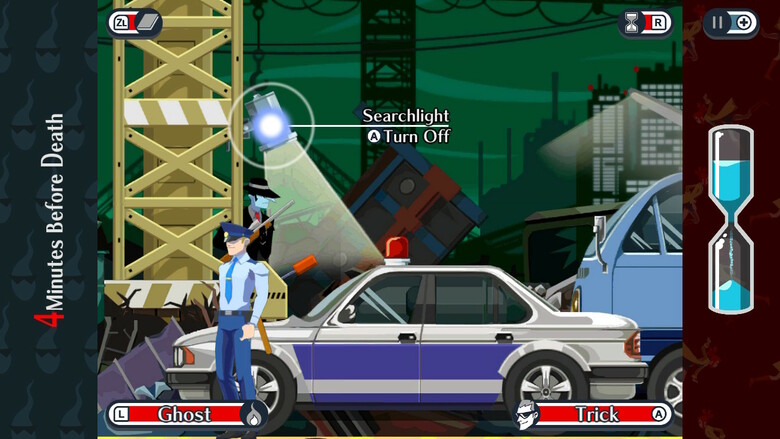REVIEW: Ghost Trick Livens Up Life and the Absence Thereof
Dead people turn into ghosts, or so leading ghost behaviorists tell me. The presence of ghosts in Ghost Trick may then lead you to believe that it’s a game about death. Despite the subject matter, the greatest trick that Ghost Trick plays is twisting its grim concept into one that’s actually about life. That one weird trick transforms the game from a macabre idea to an endearing adventure. Everything in the game brims with life – most notably, even the things that aren’t supposed to.
Ghost Trick fits roughly into the category of “puzzle game,” but it’s not a clean fit. Typically, puzzle games follow rules and a sense of logic that expands as you progress. Rules do exist in the Ghost Trick: you can only possess inanimate objects, and you can only move from object to object within a limited range. Every rule beyond those, however, reflects the nature of the afterlife itself by being vague and mysterious. That’s both the fun and the heart of the game.
Through its narrative, Ghost Trick tosses you into scenarios where you need to accomplish a specific goal, whether that’s saving someone from an untimely death or simply crossing over from point A to point B. No matter what you’re tasked with, you’re unlikely to have any clue how to accomplish it at a glance. As a ghost, you must work within the confines of the rules laid out earlier. Your best chance at victory lies in your ability to do “tricks” while possessing inanimate objects. What objects you can do tricks with and what those tricks are depends entirely on the situation.
The ethereal nature of the tricks shifts the experience from a “puzzler” to something more along the lines of an “observer.” What you observe is the one thing we all must bear witness to: life itself. If you take a look around you, wherever you are, you’re bound to see a lot of stuff. Most of that stuff is inanimate; it contains no life of its own. It only moves or changes if you, or someone as equally alive as you, makes it move or change. Ghost Trick follows that same kind of logic, but removes the “alive” part and goes one step further. It translates gives lifeless objects a life of their own, breathing new life into the mundane world around us.
Tricks convey a sense of personality for ordinary, everyday items. You never know exactly what will happen when you “trick” an object. Sure, you might have some ideas, yet the trick itself and its consequences can rarely be fully understood until you actually try it. The subtitle to Ghost Trick is “Phantom Detective.” Detectives gather information and use it to solve mysteries. While that subtitle suits the process of uncovering the many mysteries of the Ghost Trick’s story, it equally fits the gameplay.
Rather than uncovering evidence to solve a murder, though, you’re instead using your ghost tricks to gather information about potential options to prevent one. Swinging a door cabinet may launch a piece of food elsewhere, which will create opportunities for more new tricks. Those new tricks may lead to possessing the right object and the right time to convince the potential murder victim to avoid the scene of the crime. You need to play around with different objects to tease out the correct actions to take in order to reach the desired result.
This cycle of observation and then putting your knowledge into action is emphasized by the time system. When the story asks you to save someone’s life, you get sent back four minutes before their death occurs. The events that led to their death then actively unfold before your eyes while you seek out a way to change things. Given the experimental nature of the information gathering process, you’re not always going to save someone on your first try. Luckily, you always have the option to return back to the start and try again.
Time travel allows Ghost Trick to wield pacing in a versatile way. Technically, you have all of the time in the world to save someone’s life, which makes the information gathering process rather laid-back and fun. Death may be imminent, but that won’t stop the characters from chatting it up in the meantime. However, because events play out on a timer, some events up the tension by requiring relatively quick execution of tricks during a small window of time. If you fail, you’ll need to travel back in time to redo the sequence.
While the mix of pacing generally works well, it does come with some caveats. Sequences that need more precise timing can hold the actual “puzzle solving” back. If you throw an action-based element into the “play around and gather information” setup, it convolutes how to approach the game. Messing up one of these more active segments of the game, or not even realizing that there is an active component to the puzzle in the first place, risks setting you down the wrong path. You may go on a wild (ghost) goose chase for a solution that doesn’t exist or repeat solutions that seem right with a payoff that won’t come, never realizing there’s an extra step hiding right underneath your nose. This can get especially frustrating when you realize what you were supposed to do just a second too late and need to restart from the beginning.
If I had to pick between some minor action elements or none at all, I would keep the game as is. Some of the most memorable moments in the game owe it all to these dips into more action-heavy territory. The fact that the game dares tread into this kind of territory at all livens up what would otherwise be a relaxed game without the tension to match its stakes.
Even if the game occasionally frustrates you, it’s easy to forgive. The tangled web of mysteries that ties Ghost Trick together pushes you forward past any minor grievance. As the mystery unfolds, you discover engaging plot developments and fun dialogue in equal measure. The story is the lifeblood that keeps the game alive, or at least undead.
Although it may be anatomically unlikely that ghosts have hearts, you’ll believe they do in this game. Much like the everyday objects, Ghost Trick places great care in bringing its characters to life. It only makes sense then that since it charges lifeless objects with life, that anything already alive would be supercharged with it. Ghost Trick injects its characters with life on a level that few games can match, which is impressive due to how many there are and the relatively brief time you spend with the majority of them. It accomplishes this through a mix of strong dialogue and impressive animations that tell you everything you need to know about a character within seconds.
From its narrative to its game mechanics, Ghost Trick celebrates life. It recontextualizes our everyday environment into a battleground between life and death. It repurposes inanimate objects into death-prevention tools with their own unique quirks. Most importantly, it tells a story where everyone’s life matters and the smallest of roles can make a huge difference, whether you’re a renowned police detective or merely an excitable pet dog. Life is what you make of it, and Ghost Trick makes life out of everything.
A Second Chance at Life
Ghost Trick enjoys a reputation as a “cult classic” game. The one and only problem with cults is that despite their dedication, they never seem to buy enough copies of their favorite video games. Worse still, if a cultist recommends their favorite game to you, you’re probably not going to buy it either. Ghost Trick found itself in this unfortunate predicament about a decade ago and quietly faded away into the afterlife. Against all odds, however, Capcom has dug up Ghost Trick’s grave and reconditioned its coffin with changes to its gameplay, graphics and music. Just wipe away the dirt and you can hardly tell it was buried!
I consider myself to be one of these aforementioned cultists. After all, I wrote that whole review up there and thought “actually, I need to say even more about Ghost Trick!” Like any good cultist, I relish the opportunity to push my beliefs onto you. I believe that you should buy this new release of Ghost Trick unconditionally. I’m not unreasonable, though, and will at least take the time to go over some of the changes. After all, it’s not everyday that a beloved game gets a second chance at life. It does seem to happen a lot lately, but that’s besides the point.
Ghost Trick originally haunted the Nintendo DS, which calls attention to the most prominent change with this remaster…you only get one screen as opposed to the two the game was originally designed to display on. Now I know what you’re thinking: “I’m paying full price for this remaster (ideally) in the current year and I’m only getting half the screens!?” or something along those lines. Look, with the economy being the way it is, that’s just how things have to be, but fortunately, you aren’t losing out on an entire screen’s worth of content.
Most everything from the original experience fits onto one screen just fine. Some minor UI elements fail to make the cut, but the remaster never sacrifices anything vital to the game. In fact, in some ways they look better than ever.
Sometimes when art gets changed these remasters,, the game loses some vague sense of its original charm. I don’t fully agree that it is lesser than the original art, but for example the Phoenix Wright: Ace Attorney Trilogy cleans up the art to more closely resemble the original drawings rather than stick with the pixelated interpretations of the GBA and the Nintendo DS. At the very least, I do agree that said cleaning gives the art a different feel from the original.
On the Nintendo DS, Ghost Trick used noticeably pixelated 3D models that were then hand animated to convey each character’s personality. This new remaster cleans up a lot of the jagged edges of those models. Instead of giving a dramatically different impression, however, these updated visuals feel like you’re simply seeing things how they were always meant to be. They retain the simple charm of the originals.
The new soundtrack goes in the opposite direction. These new remixes were done by Yasumasa Kitagawa, the composer of the Great Ace Attorney games. If there’s one word I would use to describe the compositions in The Great Ace Attorney, it would be “full,” and that carries over to his work on these new remixes. The original compositions remain largely untouched, and instead are now complemented by additional sounds and instrumentation. I generally like them, though admittedly they move away from the original compositions by Masakazu Sugimori, which were simple, distinct, and extremely effective. You can use either soundtrack, so it’s ultimately up to preference.
As far as other bonus content goes, the offerings fall in line with the standard ones these kinds of re-releases tend to have. Concept art and special promotional pieces make up the bulk of the highlights. The one small bit of game content included is the addition of sliding block puzzles. If you complete these puzzles, you unlock more art. Honestly, I don’t even like doing the slide block puzzle in Resident Evil 4, so an entire gauntlet of them doesn’t do much for me.
I don’t like to review games based on things that aren’t actually in the game. It matters more to discuss what’s there rather than what isn’t, because otherwise the potential for whining is limitless. In this case, however, I would note what I consider to be a rather disappointing omission given the context.
This remaster is the first substantial product Ghost Trick has had since its original release, which means that we’ve had no new Ghost Trick content in well over a decade. If I were in charge of a release like this, I would have asked the game’s main writer and director, Shu Takumi, to write some kind of bonus skit or scenario to include with the game. Most of the newer Ace Attorney games offer bonus stories as DLC. In Ghost Trick’s case, that format seems like a great opportunity to give fans an opportunity to reconnect with the characters after such a long absence. I don’t see a full sequel as necessary or even likely, so this was probably the last chance for some small kind of revisit like that. It is what it is, of course, but I would have preferred something like that over sliding block puzzles at any rate!
Still, the new Ghost Trick release provides a solid repackaging with some notable if conservative changes. If any game deserves a second chance at life, it would be this one, so I hope people give it that chance. At the very least, my cult is recruiting new members and we’d love to have you.

